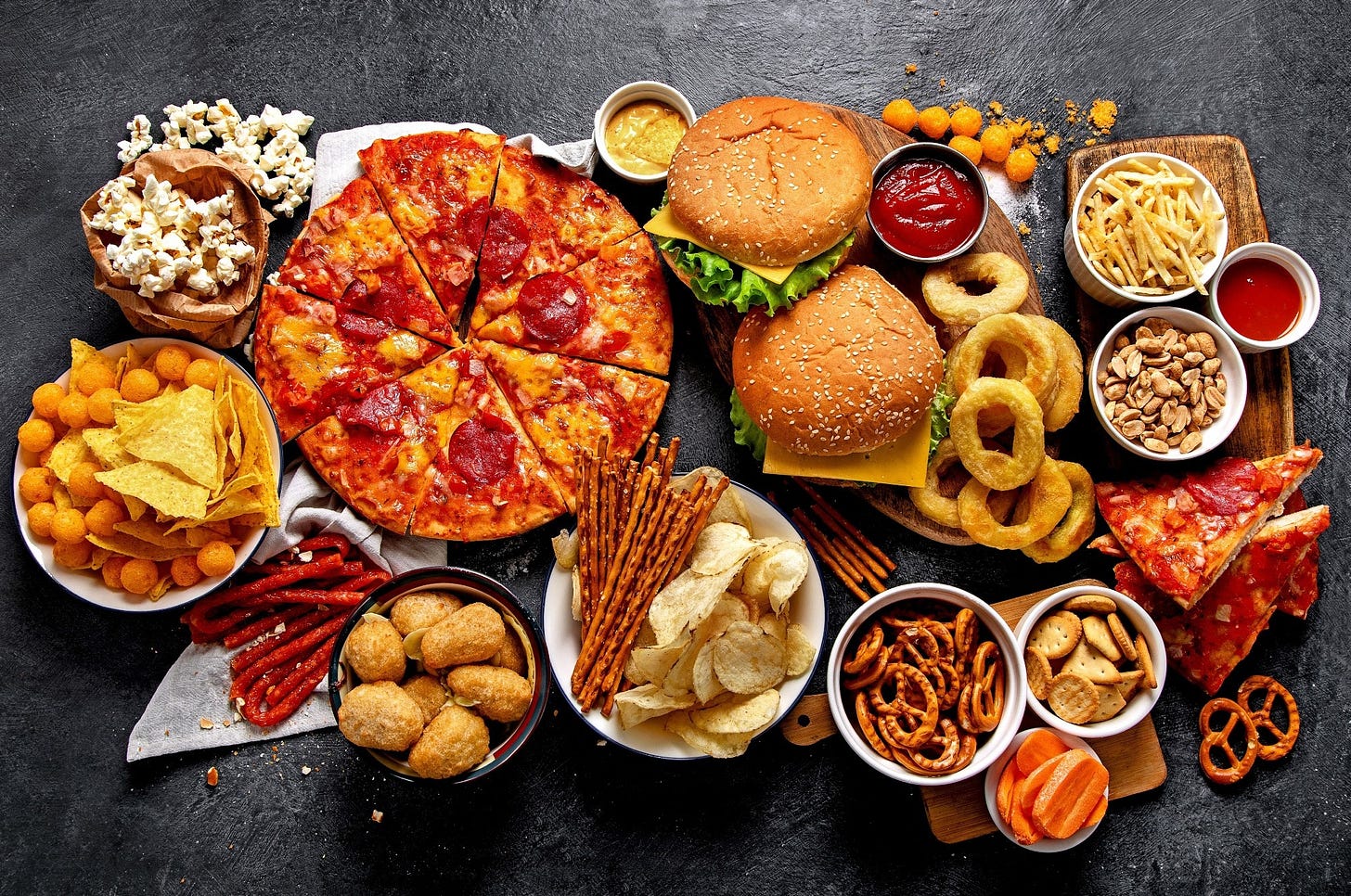SNEAK PEEK: Habits of a Lifetime
A new study reveals a crucial window in fixing people's addiction to ultraprocessed foods
The arrival of modern varieties of processed food is, in my view, as important an event in the history of human diets as the Agricultural Revolution, which began about 10,000 years ago in the Near East. The Agricultural Revolution saw human populations move from roving hunter-gatherer lifestyles to sedentarism and diets based around the consumption of domesticated grains and the products of a few different livestock species.
Certainly, the creation and widespread adoption of modern processed foods has been its own kind of revolution, in the sense that it has transformed human health and our societies in ways that simply could not have been predicted.
Well, actually, that isn’t completely true. There were early signs and they were bad. They suggested that if we continued down the road of ever-greater processing of food, our health could only get worse. We simply weren’t paying attention.
As pioneering dentist-cum-anthropologist Weston Price showed in the 1930s, the introduction of the earliest forms of modern processed food, like refined-wheat products, sugar syrups and canned goods, left a trail of destruction in its wake. He called it “physical degeneration.”
Price saw physical degeneration in his patients in Cleveland, Ohio and especially the children: Their mouths were full of cavities, their dental arches weren’t forming properly, their cheeks and nostrils were narrow and they were suffering breathing problems; they were prey to diseases and behavioural conditions that had been largely unknown even a decade before.
Travelling the world with his wife, Price found that wherever small-scale societies still cleaved to traditional diets made up of whole foods and especially nutrient-dense animal foods like organ meat, dairy and seafood, they continued to enjoy what he called “perfect health.” It didn’t matter if the people were crofters in the Highlands of Scotland or pearl-divers on the islands of the South Pacific, if they ate as their ancestors ate, they were robust, well-grown, happy, resistant to disease—beautiful. But where these new industrial foods, produced in factories, were making inroads and displacing traditional diets, physical degeneration followed: the same ugly symptoms that marred Price’s patients back home in Cleveland.
Price, as I say, was investigating the effects of the earliest generation of modern processed foods. In the century that followed, processed food has changed and evolved—“mutated,” you might even say—becoming what researchers and food scientists now call “ultraprocessed food.” New techniques, new technologies, new additives, new ingredients, new forms of packaging and new methods of advertising have been used to create foods that bear even less resemblance to the whole and minimally processed foods our ancestors ate for the longest span of time.
Some food scientists have proposed, quite seriously, that ultraprocessed food shouldn’t be classified as food at all. In reality, it’s not food but a “food-like substance,” meaning it meets certain criteria associated with food as a category—providing energy, for example—without providing the deeper kind of sustenance we call “nutrition.”
The transition from processed to ultraprocessed food has led to unprecedented levels of chronic disease throughout the developed world, from obesity and diabetes to cancer and neurobehavioural conditions like autism and ADHD.
Through scientific research, we’re also beginning to understand that there are more subtle physical changes associated with consumption of these novel foods. Changes to the structure of the brain, in particular, may make it difficult, perhaps even impossible, for us to stop craving and eating ultraprocessed foods once we’re hooked on them.
A new study offers insight into how our brains may be changing but also, crucially, when and why. The study, published in the journal Addiction, looked at the eating habits of over 2,000 US adults aged 50-80 and, in particular, whether they met the criteria for food addiction.
Keep reading with a 7-day free trial
Subscribe to In the Raw to keep reading this post and get 7 days of free access to the full post archives.



